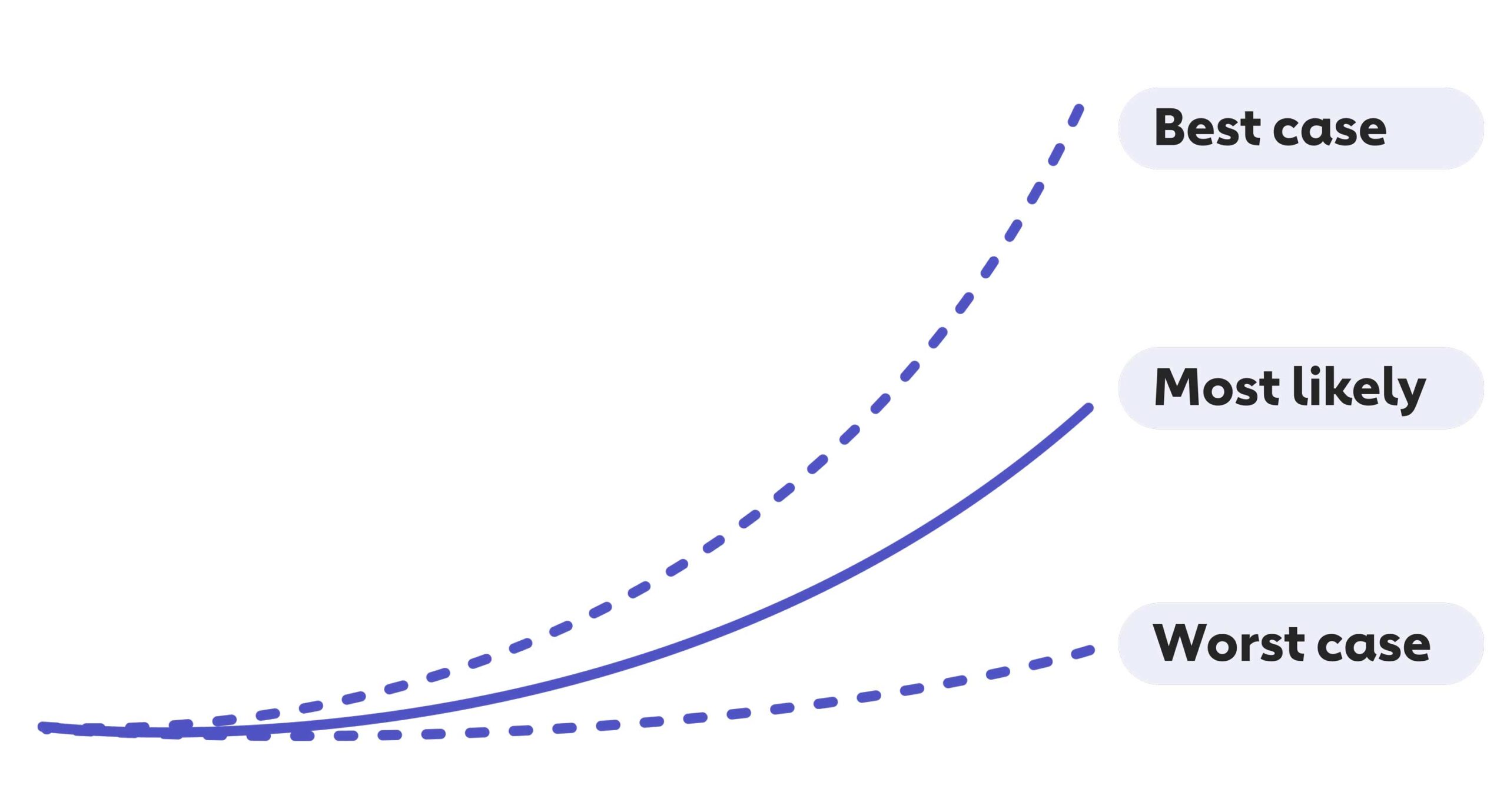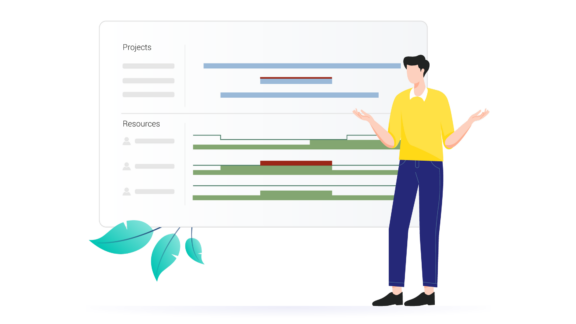What are Scenarios?
In project portfolio management (PPM), scenarios are potential ways that your portfolio can look, based on a set of well-defined assumptions and portfolio decisions. Scenario planning is used to forecast the impact of these factors on the project portfolio.
Scenario:
Definition | Examples | Synonyms
Scenarios in project portfolio management (PPM) work like simulations to test your biggest what-ifs. They help you understand the impact of different decisions or factors before implementation. These scenarios are not forecasts but rather possible future portfolio states.
In scenario modeling, PPM software is typically used, which contains data on all your projects and resources. You create a copy of your current plan and tweak some portfolio variables such as scheduling and resource allocation to get an idea of their impact.
Scenario modeling helps you ask yourself, “how would my planning change if X Y or Z?” It allows you to explore different assumptions based on your own data and current trends.

A Practical Example
Imagine you work at a mechanical engineering company that manufactures robots for industrial production. You are facing important strategic management decisions on how to optimize and future-proof your product portfolio.
This is where scenario planning comes into play:
Point of Departure: Plan of Record
First, you create a plan of record based on your ongoing planning. You use the standard assumptions you employ every day on factors like production capacity, resource availability and market demand. In our example, let’s say you have a certain number of robot types in your portfolio and plan to produce them over the next five years.
Scenario 1: Technological Innovation
Let’s say you recently read about a new breakthrough affecting your mobile manipulator (MoMa) platform and would like to examine the impact such an innovation could have on your production. What happens if you develop a new, advanced robot with enhanced features? Thus, you can create a scenario in which this new robot successfully enters the market. What increases in revenue and profit could you expect?

Scenario 2: Demand Shifts
The demand for robots can change. So, what happens if automation trends shift from cobots to MoMas, or new industries increase the use of robots? You can model a scenario where the demand for your robots significantly increases. How would this affect your profitability? And what changes could be made quickly to boost your production capacity?
Scenario 3: Supply Chain Risks
Last but not least, supply chain disruptions can impact your business. What happens if a key supplier fails? You might simulate a scenario in which a critical component supplier encounters issues. How does that affect your production and delivery capabilities?
By modeling each scenario, you use clear assumptions about the future to inform your decisions. You can get a feel for the ways your portfolio can pivot and adapt in the face of change, helping you keep your strategy flexible and adjust your planning too.
Synonyms and Abbreviations
There are no real synonyms or abbreviations for scenarios. However, there are pairs of terms that are often used interchangeably, such as What-If Simulation, Scenario Simulation, Scenario Modeling or Scenario Analysis.
FAQ
Plan of Record:
Also known as the base scenario, this is where you start with your current plan. All factors such as production capacity, resource availability and market demand remain unchanged. This plan serves as a starting point for further considerations.
Best Case Scenario:
Think optimistically! Here, you model the best possible outcome. What happens if all your “what-if” questions are answered positively? Of course, this is often unrealistic, but it inspires more ambitious and outside-the-box thinking.
Worst Case Scenario:
>Where there is a best case scenario, the worst case scenario is not far away. Here, there are usually multiple factors that hinder you from achieving your goals. Through break-even analyses, you determine the minimum values to maintain your operation. What happens if one of these metrics is not achieved? This mindset allows for Plans B, C and perhaps D to avert damage in the worst case scenario.
Most Likely Scenario:
Realistically speaking, this lies between the best case and worst case scenarios. Here, you assess risks and set achievable goals based on current data.

There are countless reasons you should use scenario comparisons in your PPM activities. For us, the three main reasons are:
Anticipating Risks and Opportunities
By simulating different scenarios, companies can identify potential risks early and respond to them. At the same time, they can also identify and capitalize on smaller opportunities.
Strategic Decision Making
Scenarios enable the evaluation of different paths and the analysis of the impacts of strategic decisions. This helps in selecting the best option for the project portfolio.
Flexibility and Adaptability
The business world is dynamic. Scenarios help in being prepared for unexpected events and flexibly responding to changes.
Many companies fail to integrate scenario modeling firmly into their regular decision-making processes, and resort to scenarios only during crises. This eliminates one of the main benefits of scenario planning, which is the early recognition and avoidance of crises.
The key is to minimize recurring risks and capitalize on smaller opportunities in regular operations. Present the current scenarios to the leadership regularly and try to always choose the best route.
And if the unexpected happens? Don’t panic! Even the best planning can’t foresee everything. However, scenario modeling helps you get ready for the worst case. Your starting situation has changed – take a breath and simulate based on the new data!
Don’t forget about your resources. At Meisterplan, we’re convinced that your employees are the most important variable. Don’t get lost in financial models – they’re useless if no one is there to implement the projects. Keep your scenarios resource focused. If you want to ensure that the right people are available at the right time, try Meisterplan out.
Scenario Comparisons with Meisterplan
With Meisterplan, simulating different scenarios is particularly straightforward. You simply create a copy of your existing Plan of Record and make various changes within this copy.
Through scenario comparison, you can then compare the Plan of Record and the scenario to each other, to compare the most important metrics. Whether you prefer hard numbers or graphical representations, Meisterplan makes it easy for you to sift through large amounts of data and identify the best possible scenario.
Discover More Here!
Dive even deeper into the topics of project, portfolio and resource management: Each page offers expert knowledge, product insights and a wealth of experience we'd like to share with you.

Future-Proof Your Strategies with Scenario Modeling

Portfolios and Scenarios in Meisterplan – What’s the Difference?
